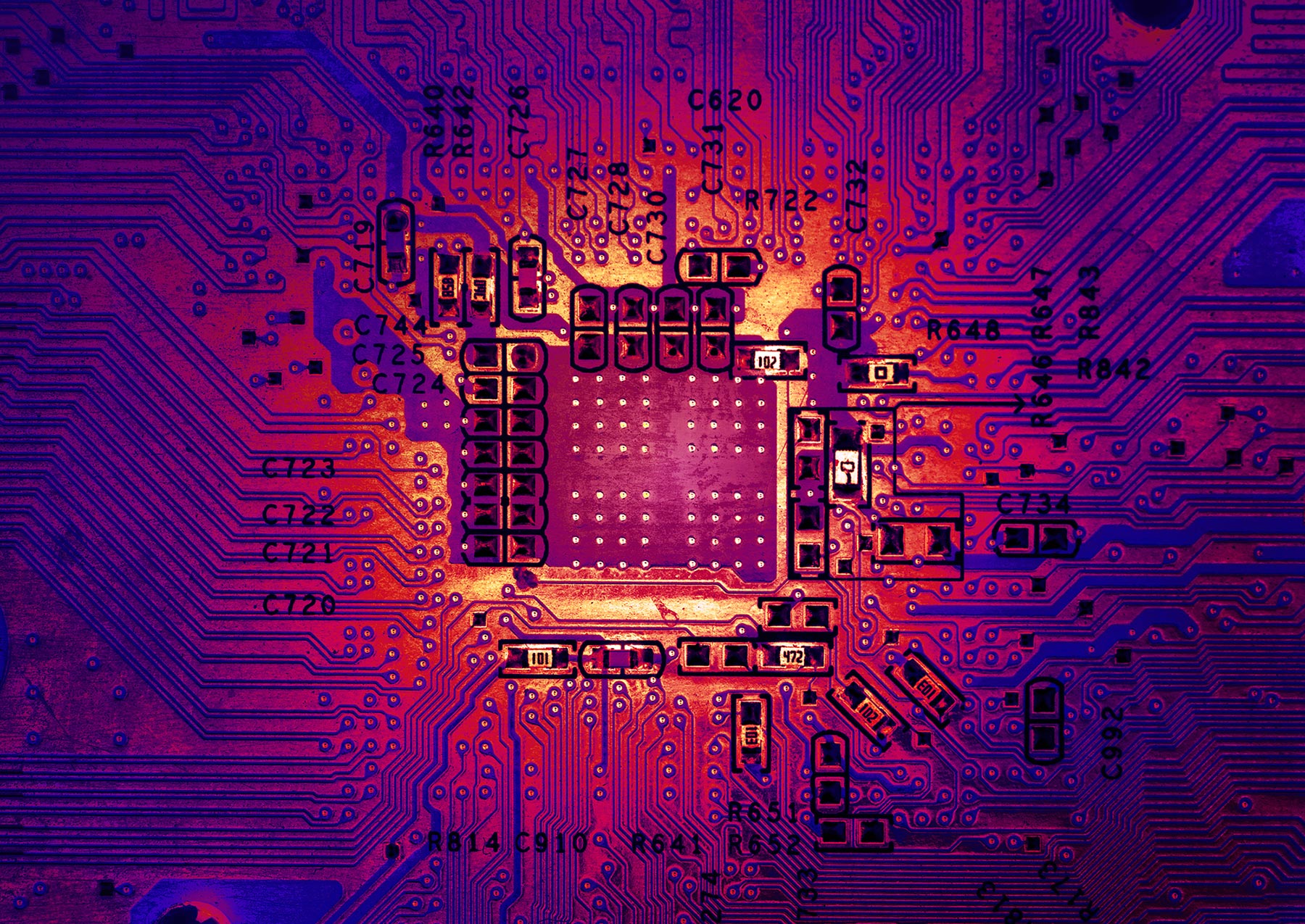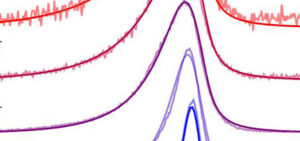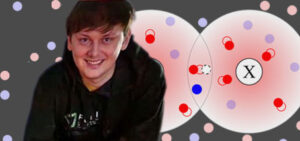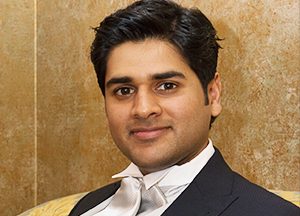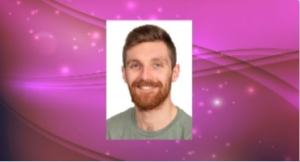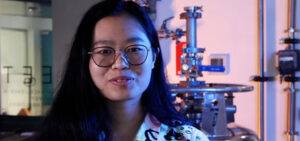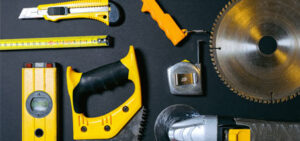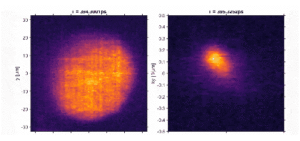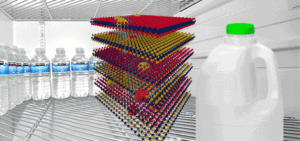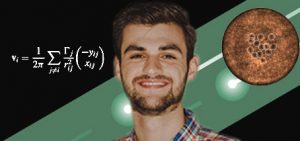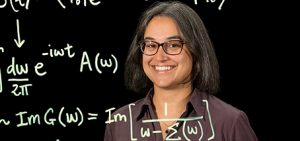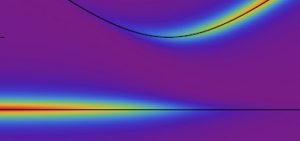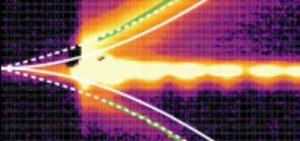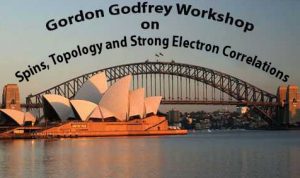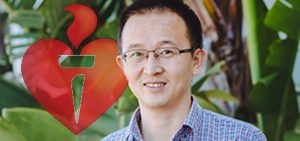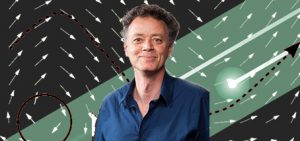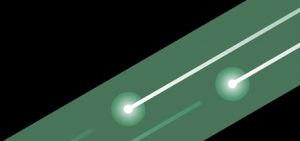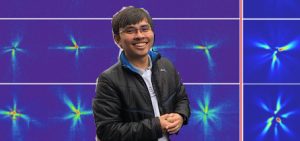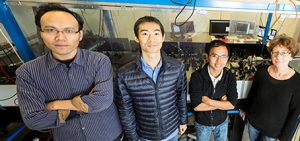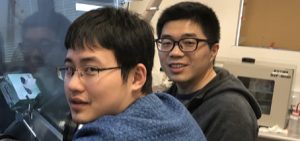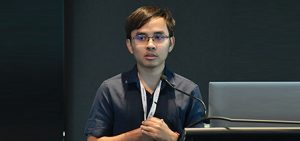FLEET Research theme 2 — Exciton superfluids
The second FLEET approach eliminates dissipation by forming a superfluid in which electron scattering is prohibited by quantum statistics, much like in a superconductor.
However FLEET’s approach will take advantage of strongly-bound electrons and holes (called excitons) in new device structures using atomically thin semiconductors to enable room temperature superfluidity.
In a superfluid, scattering is prohibited by quantum statistics, which means that charge carriers can flow without resistance.
A superfluid is a quantum state in which all particles flow with the same momentum, and no energy is lost to other motion. Particles and quasi-particles, including both excitons and exciton–polaritons, can form a superfluid.
The bilayer exciton transistor will exploit this behaviour to create a dissipationless switch for information processing.
Exciton superfluids research at FLEET
Approaches being used within FLEET’s Research theme 3 to achieve dissipationless superfluid flow are: exciton–polariton bosonic condensation in atomically-thin materials, topologically-protected exciton–polariton flow, and exciton superfluids in twin-layer materials.
Theme 2 researchers include quantum theorists (strongly correlated phenomena, superconductivity and superfluidity, low-dimensional systems, magneto-transport), non-linear scientists (including Bose-Einstein condensates of ultracold atoms, and exciton-polaritons in semiconductor microcavities), condensed matter and nanoelectronics physicists, and nano-fabrication/materials scientists.
Exciton superfluids news
Ground-breaking research revealed the ultra-narrow linewidth of a novel type of laser that operates without population inversion. Exciton-polariton lasers, renowned for their low-power operation, have long tantalised researchers with their promise for practical low-energy applications. However, until now, a clean measurement of the laser’s linewidth, or spectral purity, has remained elusive. “The spectral purity is one of the defining characteristics …
A team of Monash researchers have uncovered for the first time the full effects of interactions between exciton-polaritons and their associated dark excitonic reservoir. Exciton-polaritons (‘polaritons’, for short) are hybrid mixtures of light and matter that inherit the best properties of both. They form in semiconductors sandwiched between two mirrors, through which a laser is shone. “Polaritons capture useful properties …
This month’s ARC infrastructure funding round saw FLEET researchers across five universities on teams awarded additional funding towards research facilities, including significant new imaging resources in South Australia and NSW. Pankaj Sharma, initially a FLEET Research Fellow at UNSW and now a Centre AI at Flinders University (South Australia), will help develop new, state-of-the-art atomic force microscopy (AFM) facilities for the …
Researchers from Monash University have unlocked fresh insights into the behaviour of quantum impurities within materials. The new, international theoretical study introduces a novel approach known as the ‘quantum virial expansion,’ offering a powerful tool to uncover the complex quantum interactions in two-dimensional semiconductors. This breakthrough holds potential to reshape our understanding of complex quantum systems and unlock exciting future …
First published Australian National University A surprise observation of negative mass in exciton-polaritons has added yet another dimension of weirdness to these strange light-matter hybrid particles. Dr Matthias Wurdack, Dr Tinghe Yun and Dr Eliezer Estrecho from the Department of Quantum Sciences and Technology (QST) were experimenting with exciton polaritons when they realised that under certain conditions the dispersion became …
Congratulations to Dr Matthias Wurdack (FLEET/ANU), who has received a Schmidt Science Fellowship to develop artificial retinas. Matthias started his’ PhD at ANU in 2018, working with FLEET CI Elena Ostrovskaya to create, investigate and engineer the properties of hybrid light-matter particles in atomically-thin semiconductors with the aim to realise room temperature superfluidity based on this material platform, and understand and elevate …
Can a solid be a superfluid? Bilayer excitons form a quantum supersolid A collaboration of Australian and European physicists predict that layered electronic 2D semiconductors can host a curious quantum phase of matter called the supersolid. The supersolid is a very counterintuitive phase indeed. It is made up of particles that simultaneously form a rigid crystal and yet at the …
Multidimensional coherent spectroscopy (MDCS) on monolayer WS2 reveals Fermi polaron interactions Phase-space filling drives new optical selection rules, where excitons compete for the same electron Identification of a novel, cooperatively-bound exciton-exciton-electron state Recent Australian-led research has provided a world’s first measurement of interactions between Fermi polarons in an atomically-thin 2D semiconductor, using ultrafast spectroscopy capable of probing complex quantum materials. …
High exciton-polariton density in an engineered quantum box Possible pathway to future, ultra energy-efficient technologies Australian researchers have engineered a quantum box for polaritons in a two-dimensional material, achieving large polariton densities and a partially ‘coherent’ quantum state. New insights coming from the novel technique could allow researchers to access striking ‘collective’ quantum phenomena in this material family, and enable …
Congratulations to Priyank Kumar at the School of Chemical Engineering, UNSW Sydney, who becomes a new Chief Investigator within FLEET. “I look forward to contributing to the objectives of FLEET through both fundamental and translational research,” said Priyank. “I would like to thank Michael Fuhrer, Kourosh Kalantar-zadeh and the FLEET team for providing me this opportunity.” Priyank has been an …
QUT/FLEET researcher A/Prof Dongchen Qi has joined forces with an Australian jewellery designer to showcase the brilliance of diamond in medical, scientific, and other applications. Diamond does not naturally conduct electricity, but Professor Qi, from the QUT Centre of Material Science, led research to make it both conductive and controllable as a high-capacity semiconductor. Semiconductors conduct or insulate electrical signals …
Physicists at the University of Queensland have shed light upon how tiny whirlpools (vortices) get stuck to obstacles in superfluids. Superfluids are a quantum substance that can flow without viscosity and hence do not slow down due to friction. A second defining feature of superfluids is that they only support quantised rotation – the vortices can only spin with strength …
Generating topology from loss in hybrid light-matter particles Observation of new non-Hermitian topological invariant in exciton-polariton system Losing particles can lead to positive, robust effects. An international collaboration has demonstrated a novel topology arising from losses in hybrid light-matter particles, introducing a new avenue to induce the highly-prized effects inherent to conventional topological materials, which can potentially revolutionise electronics. Led …
New microcavity construction technique allows observation of robust, room-temperature exciton transport Polariton performance optimised by maximising photon-exciton energy exchange, minimizing the damage to monolayer A new ‘sandwich-style’ fabrication process placing a semiconductor only one atom thin between two mirrors has allowed Australian researchers to make a significant step towards ultra-low energy electronics based on the light-matter hybrid particles exciton-polaritons. The …
Tackling the next climate crisis with polariton superfluids, chocolate bars, ultra-fast laser pulses and chaotic gardening… FLEET’s Rishabh Mishra (Swinburne), Mitko Oldfield and Alex Nguyen (both at Monash University) have recently recorded explanations of their PhD research, submitted for the 2021 national Three Minute Thesis competition. Mitko Oldfield (School of Physics and Astronomy) explains his studies of polariton superfluids, with …
Congratulations to two of FLEET’s Chief Investigators, whose contributions have recently been recognised by the School of Physics and Astronomy at Monash University: Meera Parish promoted to full Professor Agustin Schiffrin promoted to Associate Professor Prof Meera Parish (right) is a theoretical physicist developing many-body theories that span electron-hole systems and ultracold atomic gases. She is an ARC Future Fellow …
How does global research collaboration work, while Covid-19 still prevents international in-lab visits? A recent FLEET collaboration found a creative solution, running in-lab demonstrations of new quantum technologies across multiple universities on two continents. FLEET’s Matthias Wurdack (ANU) and Semonti Bhattacharyya (Monash) were able to consult with researchers in the New York lab of FLEET PI Jim Hone (Columbia University), …
Please welcome FLEET’s three new Women in FLEET Honours students: Kyla Rutherford (RMIT) Olivia Kong (UNSW) Robin Hu (ANU) Kyla, Olivia and Robin have all received Women in FLEET Honours Scholarships, which are awarded to high performing students doing their Honours research project with FLEET. Kyla Rutherford will be working with Jared Cole at RMIT to understand transport properties in …
A ‘pumped’ laser can be used to trap and manipulate an exciton-polariton condensate. These quantum fluids, which can behave as a resistanceless superfluid in certain conditions, need continuous replenishing, with the pumping laser supplying both a reservoir of electrons and confining force. “The pumping laser can trap the quantum fluid as the particles are repelled from the pump region, similarly …
The ‘sloshing’ of a quantum fluid comprised of light and matter reveals superfluid properties. An Australian-led team of physicists have successfully created sloshing quantum liquids in a ‘bucket’ formed by containment lasers. “These quantum fluids are expected to be as wavy as the oceans, but catching clear pictures of the waves is an experimental challenge,” says lead author Dr Eliezer …
An international team of scientists has invented the equivalent of body armour for extremely fragile quantum systems, which will make them robust enough to be used as the basis for a new generation of low-energy electronics. The scientists applied the armour by gently squashing droplets of liquid metal gallium onto the materials, coating them with gallium oxide. Protection is crucial …
Encasing fragile 2D materials in ultrathin gallium-oxide glass could allow integration into functional low-energy devices Two-dimensional (2D) semiconductors have emerged during the past decade as extremely promising for future electronic and optoelectronic devices. However, to unlock the significant potential of these fragile materials, we must first find a way to protect them in functional devices, while maintaining their key electronic …
Enhanced interactions through strong light-matter coupling Why do two-dimensional exciton-polaritons interact? The intriguing quasiparticle the exciton-polariton is part light (photon), and part matter (exciton). Their excitonic (matter) part confers them the ability to interact with other particles —a property lacking to bare photons. In theory, when confined to only two dimensions, very slow (ie, very cold) excitons should cease any …
Congratulations to ANU’s Matthias Wurdack on winning the AIP NSW Postgraduate Award this month for his presentation “Towards future low-energy transistor technologies with exciton-polariton superfluids in atomically thin semiconductors.” Matthias received the 2020 AIP Crystal Postgraduate figurine, and a $500 award from the Australian Institute of Physics. The NSW Branch of the Australian Institute of Physics in conjunction with the …
Could a stack of 2D materials allow for supercurrents at ground-breakingly warm temperatures, easily achievable in the household kitchen? An international study published in August opens a new route to high-temperature supercurrents at temperatures as ‘warm’ as inside a kitchen fridge. The ultimate aim is to achieve superconductivity (ie, electrical current without any energy loss to resistance) at a reasonable …
An Australian-led study has provided new insight into the behaviour of rotating superfluids. A defining feature of superfluids is that they exhibit quantised vortices – they can only rotate with one, or two, or another integer amount of rotation. Despite this key difference from classical fluids, where vortices can spin with any strength, many features of the collective dynamics of …
Mobile phones and other electronic devices made from an organic material that is thin, bendable and more powerful are now a step closer thanks to new research led by scientists at The Australian University (ANU). Lead researchers Dr Ankur Sharma and Associate Professor Larry Lu say it would help create the next generation of ultra-fast electronic chips, which promise to be much faster than current electronic chips we use. “Conventional devices run …
Congratulations to FLEET CI A/Prof Meera Parish who received an ARC Future Fellowship in this week’s announcement. “The revolution in electronics and the Information Age were enabled by powerful theories based on the concept of the quasiparticle, an object composed of many particles such as electrons,” writes A/Prof Parish. The new ARC Fellowship will support Meera’s work to unravel the …
A two-day live-streamed workshop brought 30 researchers from across FLEET together last week, organised by ANU Research Fellows Maciej Pieczarka and Eliezer Estrecho. FLEET’s second research theme uses a quantum state known as a superfluid to achieve electrical current flow with minimal wasted dissipation of energy. In a superfluid, scattering is prohibited by quantum statistics, and all particles flow with …
A Monash-led study develops a new approach to directly observe correlated, many-body states in an exciton-polariton system that go beyond classical theories. The study expands the use of quantum impurity theory, currently of significant interest to the cold-atom physics community, and will trigger future experiments demonstrating many-body quantum correlations of microcavity polaritons. Exploring quantum fluids “Exciton-polaritons provide a playground in …
In January 2020 FLEET brought the 10th International Conference on Spontaneous Coherence in Excitonic Systems (ICSCE10) to Australia for the first time. Continuing this 15-year tradition from the global scientific community interested in various quantum phenomena, ICSCE10 was hosted at the Arts Centre Melbourne amidst smoke storms resulting from what was one of the worst bushfire seasons in Australia’s history. …
Australian research collaboration makes first detection of ‘ghost particles’ from Bose-Einstein condensates made of light and matter. The ANU/Monash University collaboration study: Observed ‘quantum depletion’ for the first time in a non-equilibrium condensate Discovered that ‘light-like’ condensates don’t behave as we would expect Observed ‘ghost’ excitations arising from quantum depletion for the first time. Quantum depletion observed for the first …
Almost 120 researchers gathered in UNSW last week to discuss spin and strong-electron correlations in the university’s biennial Gordon Godfrey Workshop. The 2019 Gordon Godfrey Workshop on Spins and Strong Correlations was held at UNSW’s School of Physics for five days from 25 to 29 November. The Gordon Godfrey Workshops, which have been running since 1991, provide a forum for Australian and international researchers to exchange ideas and …
First observation of excitonic insulator New exotic state was first predicted in 1960s A University of Wollongong / Monash University collaboration has found evidence of a new phase of matter predicted in the 1960s: the excitonic insulator. The unique signatures of an excitonic insulating phase were observed in antimony Sb(110) nanoflakes. The findings provide a novel strategy to search for …
FLEET Associate Investigator Professor Yuerui Lu (ANU) has been named a Heart Foundation Future Leader Fellow. The innovation of Professor Lu’s research, which focuses on the next-generation high-throughput 3D microscopy for cardiovascular imaging, was also recognised by the Foundation’s Paul Korner Innovation Award. This project aims to demonstrate proof of the concept for a novel high-throughput 3D microscope using ultra-thin, …
FLEET’s goal is to achieve 30% representation of women at all levels across FLEET. To begin to move towards this goal, we needed innovative approaches that would allow us to begin ‘shifting the dial’. One innovative initiative that has met with success was FLEET’s new women-only Fellowships, offered in multiple locations, and across all fields of study in the Centre. …
Welcome new AI Laurent Bellaiche Welcome to Prof Laurent Bellaiche, whose ongoing research collaborations with FLEET are recognised by him becoming a Centre Scientific Associate Investigator. At the University of Arkansas (US), Prof Bellaiche leads first-principles-based theoretical studies of ferroelectrics, magnetic compounds, multiferroics and other semiconductors. He has co-authored over 310 refereed journal articles, his publications have been cited more …
Dr Dmitry Efimkin (right) is a Scientific Associate Investigator at Monash University specialising in novel materials such as Dirac materials, graphene and topological insulators, and optical phenomena in solids. Within FLEET, Dmitry works with CIs Michael Fuhrer, Meera Parish, and Nikhil Medhekar in Research theme 2: exciton superfluids and Enabling technology A: atomically-thin materials, studying optical and collective phenomena in …
FLEET’s Meera Parish has been named 2019 Outstanding Referee, the only one in Australia, by the influential American Physical Society (APS). The APS selected 143 Outstanding Referees for 2019, each of whom have demonstrated exceptional work in the assessment of manuscripts submitted to the Physical Review journals. The Outstanding Referee program recognises approximately 150 currently active referees each year, and …
First snapshot of exciton-polariton Bose-Einstein condensation (BEC) in an inorganic semiconductor Unique opportunity to understand details of BEC without statistical averaging Key to fundamental understanding of exciton-polaritons An ANU advance provides never-before-achieved ‘snapshot’ of Bose-Einstein condensation. Previously, observations of exciton-polaritons in a Bose-Einstein condensate were limited to statistical averaging over millions of condensation events. ‘Snapshot’ imaging of polaritons forming a …
A FLEET study led by University of Queensland’s David Colas clarifies recent studies of negative mass, investigating the strange phenomenon of self-interference. Negative mass?? When we think of ‘mass’, we usually consider the ‘inertial’ mass – the resistance of a body to acceleration due to an applied force. For a moving object, its mass is then a simple relationship between …
Published in Monash Lens 27 Sep 2018 Featuring Meera Parish & Michael Fuhrer, School of Physics & Astronomy, Monash University Cheaper, faster, smarter, smaller – the ever-evolving digital world has changed the way we live, as predicted by the law Gordon Moore outlined in 1965. Moore’s Law foretold that the number of transistors in a dense integrated circuit would double …
Outstanding problem in exciton-polariton physics resolved using exceptional points at ANU Chirality of mode at EP opens future research avenues for exciton-polariton physics Researchers at ANU recently proved a novel method for generating orbital angular momentum states (vortices), with a topological charge that is ensured by an exceptional point. Recent studies at the ANU resolve an outstanding problem in exciton-polariton …
FLEET RMIT—UNSW collaboration measuring transport properties of van der Waals heterostructures FLEET PhD Cheng Tan (RMIT) visited UNSW’s labs in May to perform magnetic coupling measurements on 2D ferromagnetic crystals. The visit was reciprocated this month with FLEET Research Fellow Feixiang Xiang (UNSW) visiting RMIT to construct van der Waals structures for studying of 2D topological systems. This collaboration between …
FLEET collaboration traps light–matter particles FLEET’s Research theme 2 seeks to create near-zero resistance flow of exciton polaritons, which are hybrid quasi-particles that are part matter and part light. Their ability to flow without resistance relies on formation of an exciton-polariton condensate – a collective quantum state that behaves as a superfluid. In superfluids, particles flow without encountering any resistance …
FLEET researchers undertake various research projects in the area of Exciton Superfluids. If you have a project that would fit this theme, find information about a potential supervisor here: A/PROF. MEERA PARISH Theory of strongly correlated phenomena in ultracold atomic gases and electron systems Superconductivity and superfluidity Lowdimensional systems Magnetotransport A/PROF. QIAOLIANG BAO Atomically thin optical materials (graphene, 2D transition …
A recent Monash University study has investigated Fermi gases with only a small number of interacting particles, and has used that simplified case to predict some behaviours within Fermi gases with many more particles. The study was published in Journal of Physics B: Atomic, Molecular and Optical Physics, March 2017 FLEET’s Meera Parish is investigating how robust excitonic superfluidity is …

